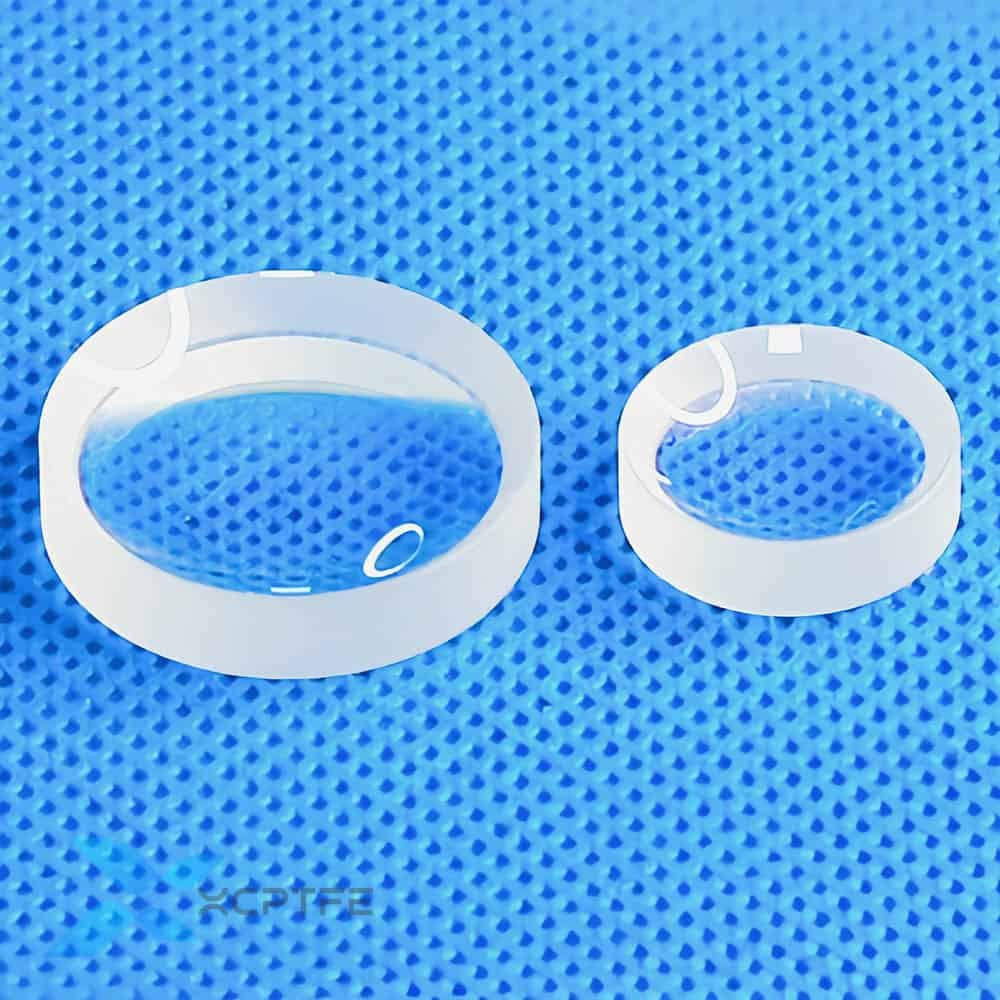Plano-Concave Lens
Custom Fabrication
Custom Fabrication
Any question you want to know, just to contact email: cusoptics@micquartz.com.
What is Plano-Concave Lens?

Plano concave lens is a basic optical lens, and its name accurately describes its physical shape. One surface is a completely flat plane, and the other surface is an inward concave spherical surface. It is one of the most typical and common types of divergent lenses.
Features
Shape: The edge of the lens is thickest and gradually becomes thinner towards the center.
Optical function: diverging lens. Its core function is to deflect parallel incident visible light rays outward, making them appear to diverge from a point on the front side of the lens.
Focal length: has a negative focal length (-). This is a common feature of all divergent lenses.
How does Plano-Concave Lens work?
Flat concave lenses cannot form real images. It can only form one kind of image:
Virtual image: Regardless of where the object is located, a plano concave lens always forms an upright, reduced virtual image. This image is located on the same side of the object and cannot be projected onto the screen. It can only be observed through a lens.
Key Optical Characteristics
Beam control
The core application of flat concave lenses is based on their ability to manipulate light beams:
Beam divergence: Its main function is to convert a collimated parallel light into a divergent light.
Beam extension: Contrary to the effect of a plano convex lens focusing a beam, it is used to enlarge the diameter of a laser beam or other beam.
Virtual focal length: Intersection of the reverse extension lines of divergent light rays at a point, which is the virtual focal point of the lens.
Application
With its reliable beam divergence characteristics, plano concave lenses play an important role in many fields:
Laser beam extension: This is one of its most classic applications. In laser systems, it is often combined with a plano convex lens (forming a Galilean telescope structure) to expand the diameter of the laser beam while reducing its divergence angle, which is crucial for applications such as laser processing and remote ranging.
Optical system aberration correction: In complex composite lens groups (such as camera lenses, telescopes), flat concave lenses can be combined with other lenses to offset aberrations (such as chromatic aberration and spherical aberration) caused by positive lenses, thereby improving overall imaging quality.
Generate virtual image: Used in optical displays, eyepieces, and some optical instruments to produce a reduced virtual image for users to observe.
Optical path shaping: used to “elongate” the optical path or adjust the direction of light propagation to adapt to special optical system layouts.
Advantages & Limitations
Advantage:
Functional specificity: Excellent and reliable performance in beam divergence.
Low manufacturing cost: A flat surface makes its manufacturing, polishing, and installation relatively simple and economical.
Aberration characteristics: Its divergent characteristics result in a smaller spherical aberration introduced by itself (similar to a plano convex lens, it is best to use parallel light incident from a concave surface).
Limitations:
Not used for imaging: It cannot be used alone to form real images, limiting its standalone application in the core imaging field.
Introducing chromatic aberration: As a single lens, it also suffers from dispersion issues, which can introduce chromatic aberration.
Send Us A Message

